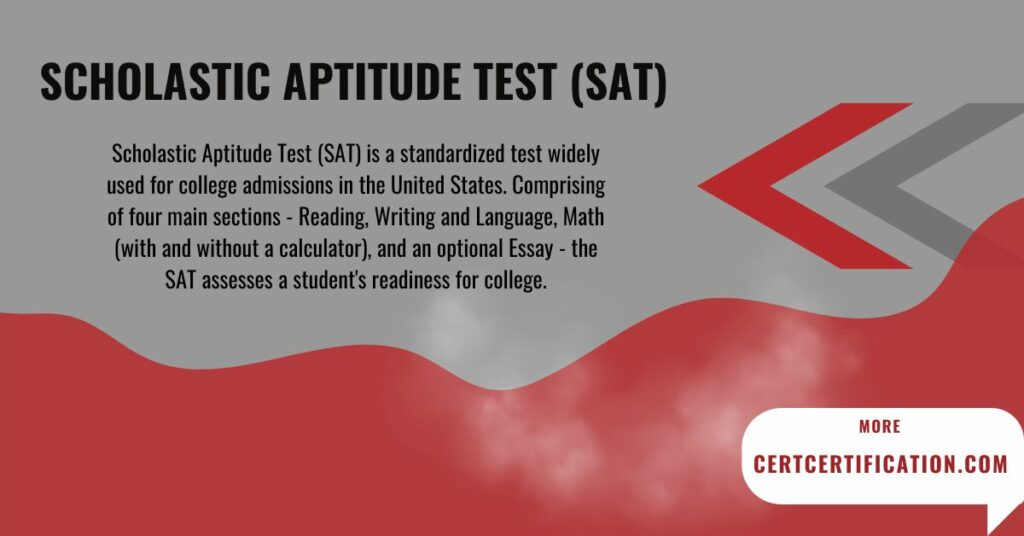Introduction
The Scholastic Aptitude Test (SAT) is a standardized test widely used for college admissions in the United States. Comprising of four main sections - Reading, Writing and Language, Math (with and without a calculator), and an optional Essay - the SAT assesses a student's readiness for college. Among these sections, the Reading section often proves to be challenging for many test-takers. However, with the right strategies and preparation, mastering the SAT Reading section is entirely achievable. In this comprehensive guide, we will delve into various aspects of the SAT Reading section, offering tips, strategies, and resources to help you maximize your score.
Understanding the Scholastic Aptitude Test (SAT) Reading Section
The SAT Reading section consists of 52 multiple-choice questions and is designed to evaluate a test-taker's ability to comprehend and analyze written passages across various subjects. The passages may be drawn from literature, historical documents, natural sciences, or social sciences. The questions assess the reader's understanding of the passage's main idea, supporting details, inferences, vocabulary, and rhetorical devices.
Familiarize Yourself with the Format
Before diving into preparation, it's essential to understand the format of the SAT Reading section. The section includes five passages, each followed by a set of questions. These passages can range from 500 to 750 words in length and cover diverse topics. Passage types commonly include literature (fiction or non-fiction), historical documents, social sciences, and natural sciences. Becoming familiar with the format will help you manage your time effectively during the exam.

Improve Reading Comprehension Skills
Enhancing your reading comprehension skills is fundamental to performing well on the SAT Reading section. Here are some strategies to improve comprehension:
Active Reading: Engage with the passage actively by underlining key points, making notes, and summarizing paragraphs. This practice helps in retaining information and identifying crucial details.
Practice Regularly: Set aside time to read a variety of texts regularly. This habit not only broadens your knowledge but also strengthens your comprehension skills.
Summarize Passages: After reading a passage, practice summarizing its main idea and key points in your own words. This exercise reinforces understanding and retention.
Master Time Management
Time management is critical on the SAT Reading section, where you have approximately 65 minutes to read the passages and answer the associated questions. Here are some time-saving strategies:
Prioritize Passages: Begin with passages you find easiest. This approach allows you to secure points quickly and build confidence before tackling more challenging passages.
Limit Time per Passage: Allocate a specific amount of time to each passage, ensuring you don't spend too long on any single question or passage. Stick to this schedule to maximize efficiency.
Skip Tough Questions: If you encounter a particularly challenging question, don't hesitate to skip it and return to it later. Focusing on easier questions first can help you make the most of your time.
Develop Vocabulary Skills
A strong vocabulary is essential for understanding the nuances of passages and answering vocabulary-based questions. Here's how to enhance your vocabulary:
Read Widely: Exposure to a diverse range of texts exposes you to new words and phrases. Make a habit of reading challenging material regularly.
Use Flashcards: Create flashcards to memorize unfamiliar words and their meanings. Review these flashcards regularly to reinforce retention.
Contextual Clues: Learn to infer word meanings from context. Often, the surrounding sentences provide hints about the meaning of unfamiliar words.
Understand Question Types
Familiarize yourself with the different types of questions you'll encounter on the SAT Reading section. Common question types include:
Main Idea: Identify the central theme or main point of the passage.
Supporting Details: Locate specific details that support the main idea of the passage.
Inference: Draw conclusions or make educated guesses based on information provided in the passage.
Vocabulary in Context: Determine the meaning of words or phrases based on how they are used in the passage.
Author's Purpose: Understand the author's intention or motive behind writing the passage.
Practice with Official SAT Materials
Utilize official SAT practice materials, including practice tests and sample questions provided by the College Board. These resources closely resemble the actual exam and offer valuable insights into the test format and question types. Additionally, review answer explanations to understand the reasoning behind correct and incorrect answers.
Take Timed Practice Tests
Simulate real test conditions by taking timed practice tests regularly. This practice not only familiarizes you with the pace of the exam but also helps alleviate test anxiety. Analyze your performance after each practice test to identify strengths and areas for improvement.
Review Mistakes and Learn from Them
Reviewing mistakes is crucial for learning and improvement. Take the time to understand why you missed certain questions and identify any recurring patterns or weaknesses. Use this feedback to adjust your study plan and focus on areas that need improvement.
Seek Additional Resources and Support
In addition to official SAT materials, consider utilizing other resources such as prep books, online courses, and tutoring services. These resources offer additional practice opportunities and targeted instruction to help you strengthen your skills.
Stay Calm and Confident on Test Day
Finally, on test day, maintain a positive mindset and stay calm under pressure. Trust in your preparation and approach each question methodically. Remember to pace yourself and manage your time effectively to maximize your score.
Conclusion
Conquering the SAT Reading section requires a combination of diligent preparation, effective strategies, and confidence. By familiarizing yourself with the test format, improving reading comprehension skills, mastering time management, developing vocabulary, understanding question types, practicing with official materials, reviewing mistakes, seeking additional resources, and staying calm on test day, you can significantly increase your chances of success. With dedication and perseverance, you can ace the SAT Reading section and achieve your college admissions goals.
Comments (0)